

Learn how to use the Three-Act structure to create riveting stories, and see expert examples of the Three-Act structure from 1982’s Poltergeist!
Have you ever watched a Hollywood summer blockbuster? Say, the latest Marvel film or disaster movie? If you answered yes, then you’ve seen the three-act structure at work. The three-act structure is one of the most common and successful story-telling tools developed in the last thousand years.
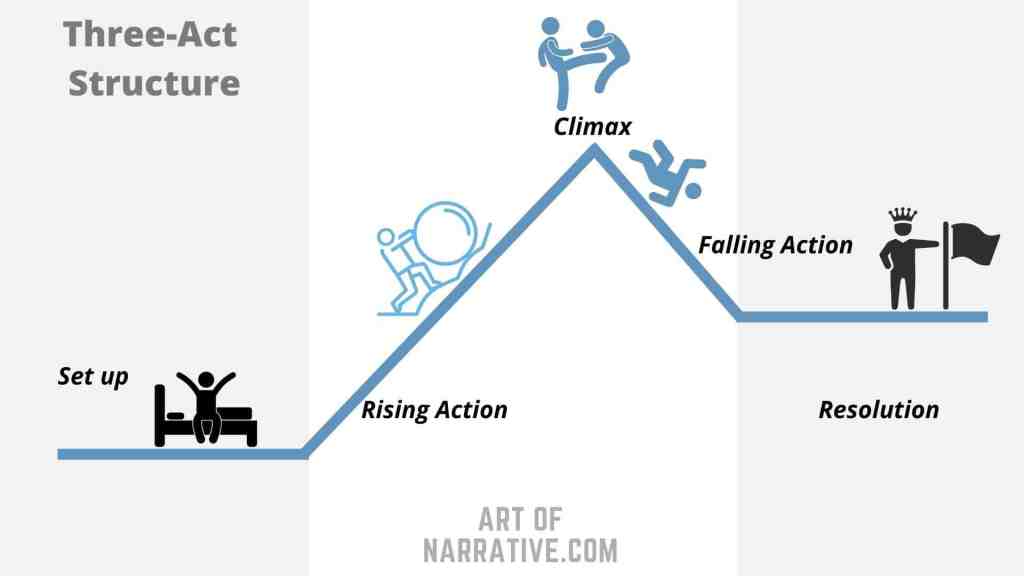
The three-act structure’s creation is credited to the Greek philosopher Aristotle. The philosopher described stories as having a cause-and-effect chain of events that lead from an initial conflict to an escalation and ending with a resolution. Writers separate this chain of events into three acts, and each section has a specific purpose. Let’s look at each of these acts individually and learn more about the three-act structure.
The beginning of the story. The setup gives your reader a sense of who your characters are and what their everyday lives are like. During the setup, the author will also establish stakes, what the character has to lose and hint at the conflict. The first act contains two plot points- the inciting incident and the first turning point.
Act II- Confrontation
Act II is where the action of the story gets going. After establishing the characters’ everyday life, the author will disrupt the characters’ lives somehow. This disruption will cause the character to work to reestablish life as they knew it. The confrontation contains the rising action, mid-plot point, and the second turning point.
Act III- Resolution
The author wraps up the story as the character resolves their conflict. The resolution can be either positive or negative. The character will experience some pivotal event. They may have to grow as a person to overcome their conflict. Character and reader learn lessons. The resolution contains the climax, falling action, and denouement.

Act I – Setup
The hook is what it sounds like- it’s a moment that grabs your reader and pulls them into the story. The hook is usually a single moment of intense action that starts your story. A hook is also great for hinting at the threat or antagonist of the story. If you’re writing a horror movie, we may see a demon murder the residents of a home that your main characters will buy in the next scene.
An inciting incident is a plot point that puts your hero into the worst trouble of their life. This event completely disrupts their life. It forces them to develop a goal and take action, usually to return to the way their lives were before the event.
Turning Point 1
At the first turning point, your character decides to take action. This decision may be a reluctant one, forced due to the inciting incident. The first plot point is a break from your character’s status quo, propelling your hero into the story’s action. At this point in the story, your character decides to take action to regain their everyday life.
Act II – Confrontation

The rising action is a chain of cause and effect events in your story’s second act. These events gradually raise the tension as your character must take increasingly desperate measures to resolve their conflict. Each of the efforts your character attempts will plunge them deeper into the conflict of your narrative.
Mid-Plot Point (plot twist or failure)
Your raising action will finally break with the mid-plot point. The mid-plot point should be a crucial moment for your character. This moment could come from a plot twist, sudden revelation, or a catastrophic failure. The mid plot point shifts your story into high gear as the character discovers that they will not quickly resolve their problems.
Turning Point 2
In the aftermath of the mid-plot point, your character will again have to decide to commit to their journey. This plot point may come after a bit of soul searching. After the mid-plot point, your hero may find a safe space to regroup and take stock of their losses. The hero may have a heart-to-heart with a trusted mentor or friend. Your character will emerge from the second turning point by committing to their journey and preparing for the third act confrontation.
Act III – Resolution
The climax is the highest point of tension in your story; it is also the third turning point. This beat is when your hero faces off with their primary antagonist. The climax is a battle, if not literally, then figuratively. This part of the story marks the beginning of the resolution of the narrative. After the climax, the tension built up throughout the middle act begins to wind down. Answer your story’s central question at this point.
During the falling action, the story’s tension begins to unwind. The direction of the narrative may shift and slow down after the climax. The pressure does not disappear entirely from the story, though. Answer any questions left dangling after the climax of your story. The story’s pace will slow down during this section of the story. No new conflicts will usually occur at this point.
Denouement (pronounced DAY-NEW-MAHN)
The denouement is the resolution of your story’s conflict. As an author, writing a denouement means you are tying up all the loose ends and answering any lingering questions. A denouement is different from an epilogue. An epilogue does not resolve conflict; it merely shows the reader where characters end up after the resolution.
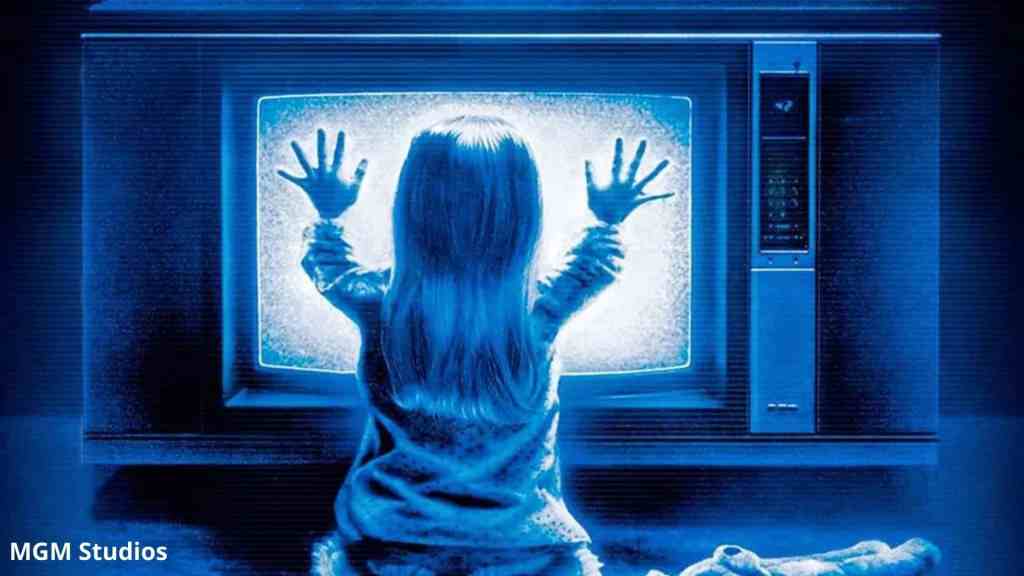
Poltergeist (1982 film)
If you’ve never watched the 1982 supernatural horror Poltergeist, then you’re missing out. Not only is this film a great example of the three-act structure, but it’s also a terrific movie. So, if you haven’t seen it, watch it before you read any further because I’m going to spoil all of it.
There’s another reason why I’ve chosen Poltergeist, and that’s because it has a riveting third act with an extended ‘falling action’ section. Two moments could count as a climax in this movie. It’s important to realize that this story structure is fluid, and these rules are not set in stone. Not every story will conform perfectly to one format, and that’s fine.
Any structure you use should serve your story, not the other way around.
Example of Hook
The movie follows the Freeling family, Steven, and Diane and their three children Dana, Robbie, and Carol Anne. They live in a planned community in California where Steven works as a real estate developer.
One night, the entire family falls asleep in front of the television. The tv goes to static, waking up the youngest daughter, Carol Anne. Whispers from the TV’s static call out to Carol Anne and the young girl is hypnotically drawn to these voices. She answers the voices, waking up the rest of the family.
Example of an Inciting Incident
A week later, it is Sunday night, and a thunderstorm is rolling in. Robbie is having trouble sleeping, spooked by the gnarled tree outside his window and Carol Anne’s clown doll. Steven tries to comfort Robbie by teaching him to gauge the storm’s distance by counting between the lightning and the thunder. But, one massive thunderstrike sends both Carol Anne and Robbie to sleep in their parents’ bed.
As they’re sleeping, the tv once again goes static. Carol Anne wakes up and is drawn to the voices on TV. This time a spirit leaves the tv and travels through the bedroom wall, causing the house to quake. Carol Anne responds to this by saying, “They’re here.”
“They” are the spirits that will spend the rest of the movie terrorizing the Freeling family.
Example of Turning Point 1
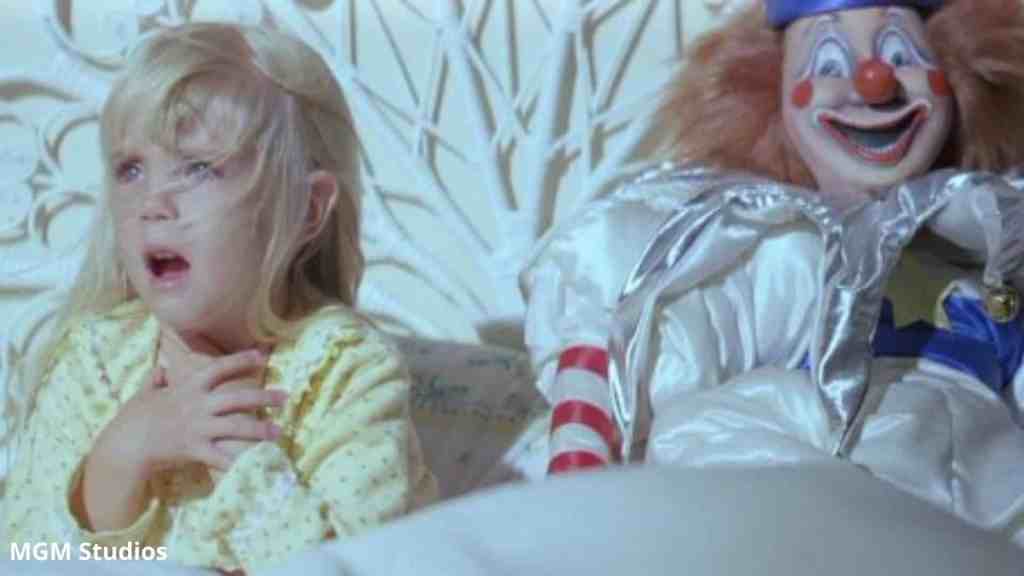
On another night, during another storm, Robbie is again having trouble sleeping. Suddenly, the gnarled tree outside of his window comes to life, possessed by spirits. The tree smashes through the window and grabs Robbie pulling him from his bed. He screams, and Steven and Diane rush into the room.
As the parents save Robbie, Carol Anne, the spirit’s actual target, is left alone in her bed. The energies pull Carol Anne from her bed into a portal in the closet. Now trapped in the spirit realm, Carol Anne calls out to her parents.
Steven and Diane must now find a way to retrieve their youngest daughter from wherever she’s gone. This beat is the point of no return for the Freeling family.
Example of Rising Action
Unsure what to do next, the Freelings invite a group of parapsychologists from UC Irvine to investigate their home. The experts determine that the Freelings are suffering from a poltergeist rather than an ordinary haunting. A poltergeist attaches itself to a person. The spirits in the home believe that Carol Anne’s lifeforce is their salvation.
A series of paranormal events happen after the investigators arrive. The family makes contact with Carol Anne, but she is chased away by a malicious spirit. One of the investigators has a vision of his face decaying in the bathroom mirror. Everyone witnesses an angelic being as she descends the staircase, followed by other souls. The following day the investigators leave, promising to return with more help.
Example of Mid Plot Point
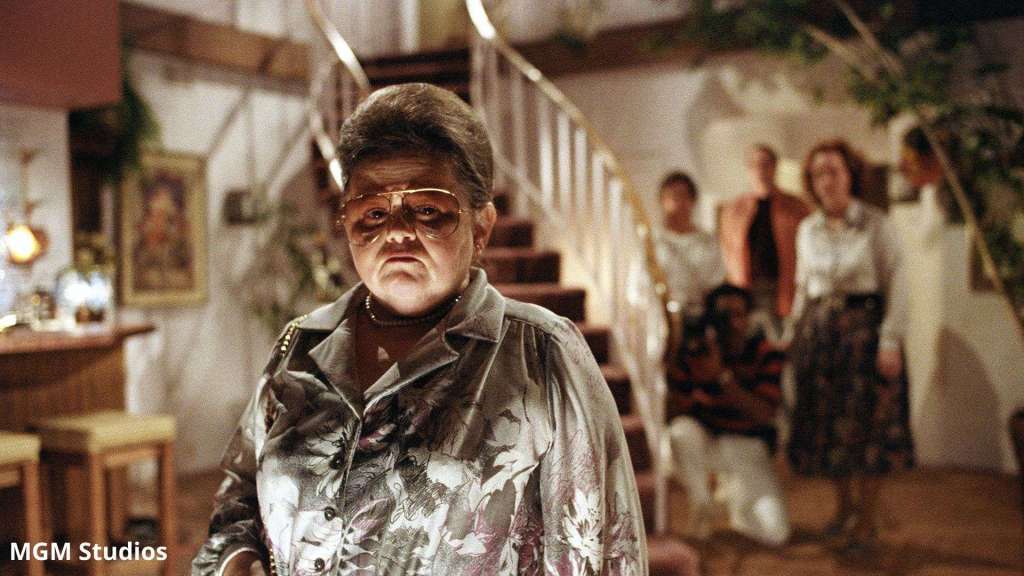
The paranormal investigators return with spiritual medium Tangina Barrons. Tangina explains to the family that the spirits are peaceful, but they’re attracted to Carol Anne’s lifeforce. However, there is also an evil spirit that Tangina calls “the Beast.” The Beast is feeding off of Carol Anne and the other ghosts.
Diane travels through the portal in the children’s closet with a rope attached to her waist. Steven holds the other end of the rope as Diane searches for Carol Anne in the spirit realm. The Beast emerges from the portal and attacks Steven. Still, Diane and Carol Anne escape the portal through the livingroom ceiling.
Tangina proclaims that the house is as clean, purged of all spirits. However, the Beast remains in the home, and it now seeks revenge after losing Carol Anne and the other spirits.
Example of Turning Point 2
Believing they’re now safe, Steven and Diane decide to sell the house and move away. On their final night in the house, everything is calm. Steven leaves to gather things from his office, and Dana spends the night at a friend’s house. Diane is relaxing in a bath when the Beast returns, locking Carol Anne and Robbie in their room. Diane is left to confront the Beast, now in a monstrous physical form, on her own.
Example of Falling Action
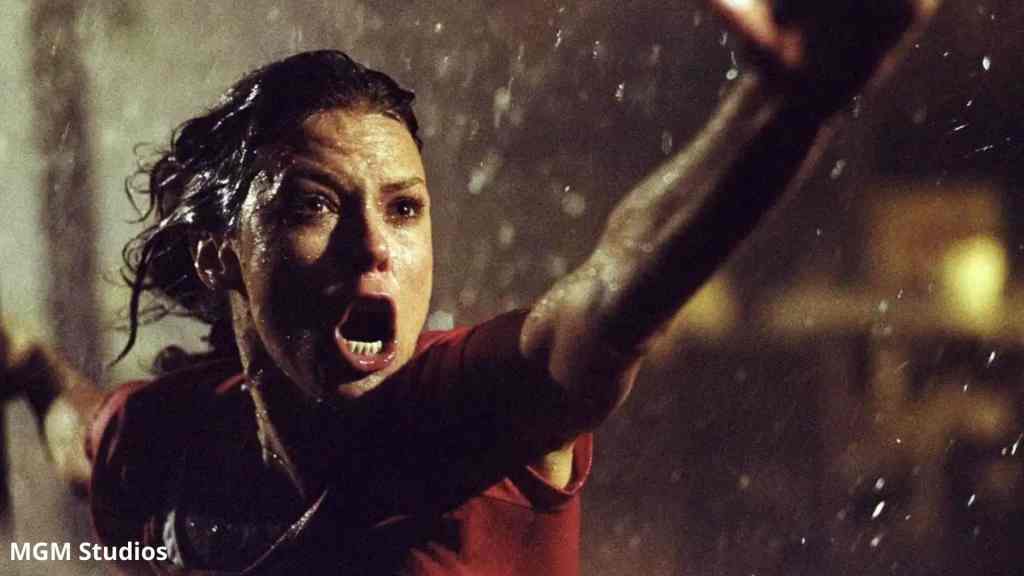
Diane escapes the house into a thunderstorm after the Beast blocks her from entering the children’s room. Seeking help from the neighbors, Diane falls into the unfinished pool, which explodes with coffins and rotting corpses. Steven returns home with his boss Mr. Teague. Seeing the coffins and corpses, he realizes that Teague has knowingly built their subdivision over a burial ground and desecrated the bodies. He confronts Teague.
Diane returns to the house and saves Carol Anne and Robbie from the Beast. The family drives away in horror as their house implodes in on itself.
Example of Denouement
Steven, Diane, and the children escape the neighborhood leaving Teague to reap what he has sewn. They arrive at a Holiday Inn outside of town and check into a room. Steven rolls the tv out of the room and shuts the door.
That is the three-act structure, and it’s a simple and proven technique for writing a well-paced story. Does this structure guarantee you’ll write a good story? No, for that, you need a lot of practice. Is the three-act the only structure to use for your story? No! Here are articles on three other story structure options that are alternatives to the three-act structure: